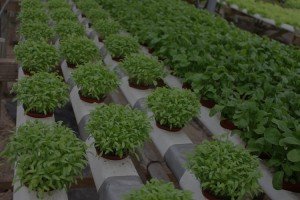Getting Started, Growth Cycles
Raising Cuttings And Seedlings
Raising Cuttings And Seedlings.
To help make propagation easy, take a look at the following eight suggestions.
1. Start more Seeds than you Need, and Take more Cuttings as well
Failures can and will happen, and you will need a backup supply when they do.
Should those failures not occur, you have done well! Simply use the best seedlings and cuttings out of the bunch.
Start off with double the amount to make sure you have enough.
2. When possible always select cuttings over Seeds
Keep in mind that you never know what the genetic makeup of the seeds is – there will be slightly different characteristics on all plants grown from seeds.
On the other hand, cuttings are genetic clones of the parent plant. Whenever you can always use cuttings from those plants that are your best performers.

Starting off with seeds is fine – our genetic stock must grow from somewhere!
When we get started with seeds before switching to the flowering cycle take cuttings from each plant. You are going to know which plants are your top performing ones and once they have fully flowered. When you next propagate, use the cuttings from these plants.
3. When they have established a good root system transplant the plants.
You can stress them out by transplanting them too soon. Poor root development may then be the result of doing so.
After around 10-28 days as long as you have used Clonex or some other rooting gel, most seedlings and cuttings will look sturdy for their size and have plenty of roots. At this point, you should transplant them.
4. Keep Your Humidity Between 80-95%RH
Simply close the vents, to raise the humidity in your propagator.
Less water is lost through leaves at a high humidity.
Energy then will be used for rooting instead of being spent replacing the water.
Aim for between 85-95%RH(relative humidity) when at 22oC-25oC.
5. Keep temperatures bwetween 21 and 26 C
Anywhere between 21C and 26C works well, but the ideal temperature is 24C.
Try a heated propagator to stay within this range.
Vitopods, which function like little greenhouses, are a good bet! There are never any cold patches because heat is evenly distributed across the propagator base.
6. Put propagation lights to use
You will do the trick with a T5 light or blue 125W CFL.
These will hardly produce any heat, as they are low energy and low intensity. When raising cuttings or seedlings, they truly work wonders.
Far too intense are HID(High Intensity Discharge) lights. They can be used, but you have to raise them as much as 3 times more than normal.
Should you have a 600W grow light, position it above the propagator at 1.5-1.8M above.
7. Use a Root Booster
You will have healthier plants when you get your roots right! There will also be faster growth and bigger yields.
You will speed up root initiation, boost root mass, and stimulate branching with a good root booster. A more complex network with more secondary roots will be developed by your stronger plants.
8. Use A Propagation Grow Tent
These are compact and small – precisely the best size to maximize your propagation lights.
